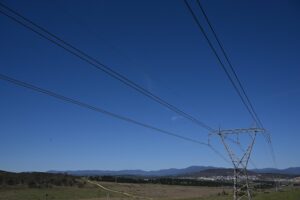 Energy-from-Waste (EfW) is a progressive solution to Australia’s growing waste management problem. Australian Ethical’s International Equities Portfolio Manager, Nathan Lim, explains
Energy-from-Waste (EfW) is a progressive solution to Australia’s growing waste management problem. Australian Ethical’s International Equities Portfolio Manager, Nathan Lim, explains
The problem today
Australia generates 48 million tonnes of trash a year. That is 2.2 tonnes per person and the amount we throw away each year is growing 40% faster than population growth, according to the Department of Sustainability (DoS). Fortunately, 60% of what we throw is recycled putting our recovery rate around the middle amongst developed nations.
The DoS highlights that Germany achieves a recovery rate of 91% despite generating more than double the trash per capita (4.6 tonnes) as Australia. In fact they identify seven European countries that have recovery rates in excess of 97%. They attribute this performance to:
“…directives prohibiting unsorted waste going to landfill and greater use of advanced waste processing and EfW facilities.”
EfW stands for Energy-From-Waste or incineration. In Germany, 14% of its municipal solid waste (MSW) is burned to make renewable electricity. In Australia, only 3% of our waste is recycled for its embodied energy. EfW, as it is practised overseas, is non-existent in Australia. Energy recovery here is primarily achieved via the harvesting of landfill gas to produce electricity, as well as a small amount from anaerobic digestion and a few cement kilns using old tyres as supplementary fuel.
What is EfW?
A few years ago we had the opportunity to visit a modern EfW facility owned by Covanta Holding Corporation. Their Essex facility converts 2,800 tons of MSW per day into baseload electricity for 45,000 homes. A remarkable aspect of the facility was despite the amount of garbage being collected daily; there was no foul smell. The use of negative air pressure pulls odor into the facility while simultaneously keeping the fires burning. In terms of emissions, a modern EfW facility, like the one at Essex, produce fewer emissions than from a natural gas-fired power station minimising local air pollutants. In fact, the German Ministry of the Environment reports that residential fireplaces emit 20 times more dioxins than an EfW plant.
Would it work here?
EfW technology is widely available, and there is nothing preventing its use in Australia. For example, New South Wales (NSW) generates 4.8 million tonnes of MSW per year with 43% of it landfilled. This landfilled MSW is sufficient feedstock to support a 2,800 ton facility that would already bring our national MSW recovery ratio up to about half of what Germany is currently achieving.
What would it cost?
We know that Covanta’s Essex contract allows it to collect US$150 per ton of MSW. The facility also earns revenue from the sale of electricity. The current contract was sufficient for the company to commit US$100 million in upgrades and increase its dividend. We believe this points to a strong economic contract for the company. Assuming this facility were operating in NSW and it received a credit for its electricity at $34 per megawatt hour (the average wholesale price in NSW last year), the equivalent contract price would be around $160 per metric tonne.
According to the NSW Office of Environment and Heritage, in August 2011 the average gate fee over landfill sites surveyed in the Sydney region was $195 per tonne for mixed waste. Because landfill gate fees are so high, this suggests EfW could be economic in NSW based on Covanta’s overseas experience.
Part of a sustainable future
Besides potentially being cheaper, a modern EfW facility in Australia would also displace coal-fired power generation as it is capable of providing continuous supply. This would help to reduce our national carbon footprint.
Waste management is a perpetual problem that only gets bigger over time. The NSW government’s policy to divert 66% of waste from landfill is a good example of a progressive policy that has supported more sustainable solutions but to continue this drive we need new solutions. The success of some European countries to nearly eliminate MSW from landfills is a remarkable and achievable goal Australia should look to mirror. Too much valuable material is simply being buried and wasted that could otherwise go towards making ours a more sustainable society. EfW is part of this sustainable future.








